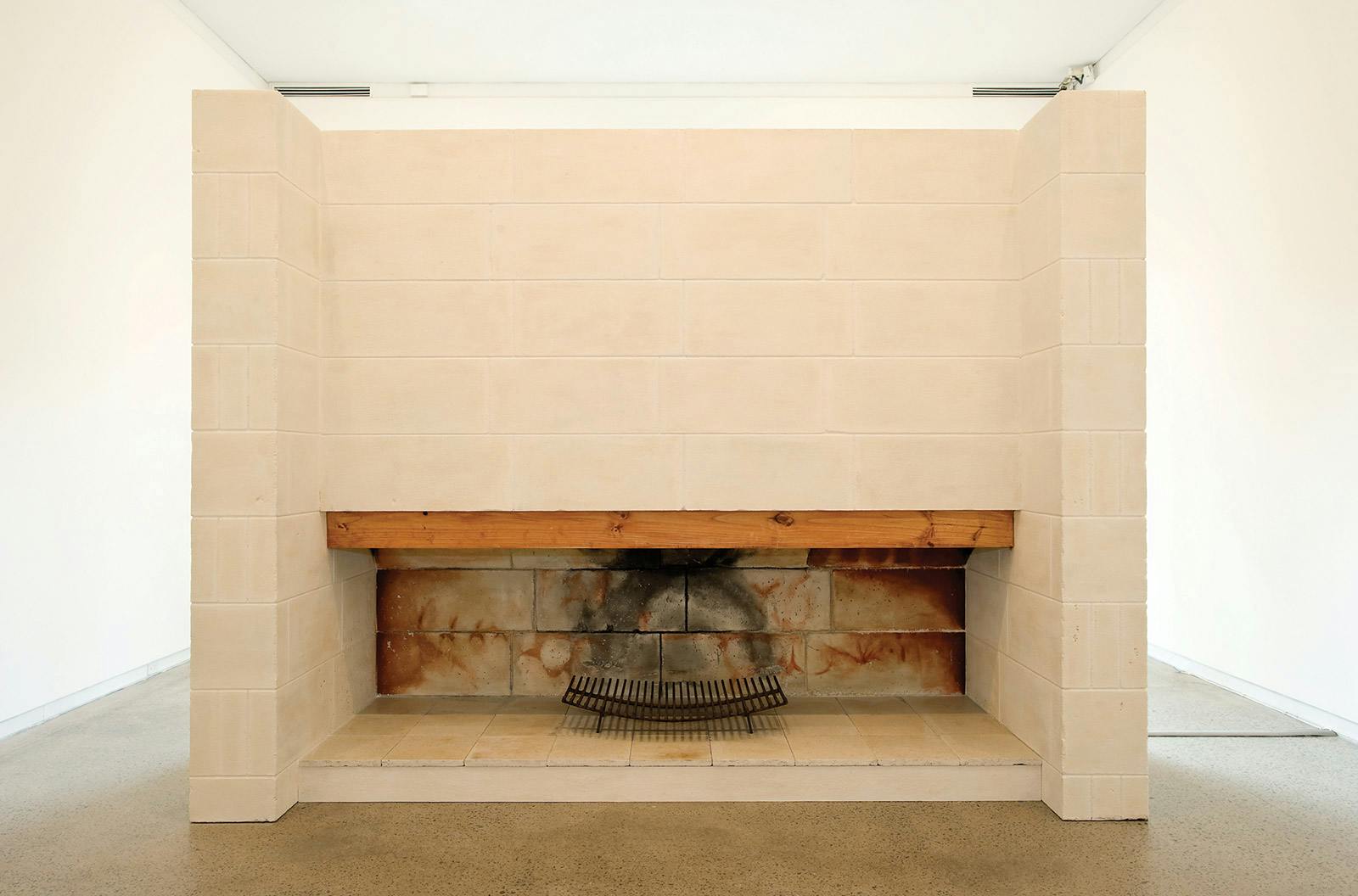CALLUM MORTONIN MEMORIAM
Free with Museum Pass
Free entry
This exhibition draws from almost twenty years of work by Callum Morton, a Melbourne artist with a significant international profile whose art explores the personal and social impact of architecture and our built environment. From early drawings of fires and explosions on housing commission flats, to bullet-holed Screens, Awnings and Monuments that memorialise the serial deaths of capitalism and outdated forms of modernity, Morton’s works present a melancholic urban archaeology. He salvages fragments and alters them through camouflage, destruction, the overlaying of sound, and changes of scale, location and material. The highly ambivalent objects that result make us think about the relationship between art and life, history and the present, and look again at the ubiquitous structures we see but rarely notice.
Morton’s siting of a large Le Pine Funerals sign near Heide’s top car park labels the museum a mausoleum, a ‘cemetery of wasted effort’ to quote futurist poet Marinetti. This sentiment is echoed by Morton’s In Memoriam, a title that also registers the tomb-like quality of many of his sculptures. The artist may have entombed himself but delays his ultimate fate by keeping on producing – new works are a central part of this exhibition, including several based on the Reeds’ modernist home Heide II.
Often visually impenetrable, Morton’s fragments of modernity are subject to a variety of destructive forces that stop short of obliterating their targets. He uses cinematic or theatrical means – lights, sound and action – to dramatise the messy experience of living that modernism represses. A heartbeat stops and then starts again, a woman screams but the party rolls on, walls or screens are smashed but still hold up. Fakery, mimicry and automation are used to comic effect, deflecting our anxiety about the life they hint at behind his walls and surfaces.
As the plaintive cry in Gas and Fuel suggests, Morton’s is a world in limbo where things live on, nothing is ever buried, and a laugh might easily turn into a howl. Yet his archetypal box – whether hut, sarcophagus or shop – does creak open, no more so than in his newest work, Monument #28: Vortex, a carved stony tunnel, five metres deep, that sucks our vision through to the gardens outside: a wormhole into the future.
